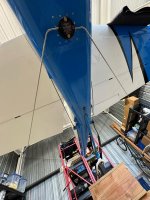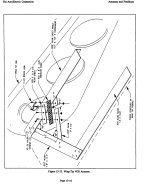Bill_H
Well Known Member
We have a steam gauge RV9a. Updating to an EFIS soon. But we also have an unused VAL INS422 we could put in it for enough IFR capability to get out on a low day. The INS has a built in indicator. So it needs a VOR/LOC/GS antenna and a diplexer to split that signal to the separate VOR/LOC and GS inputs on the VAL. The marker beacon antenna and input would be optional but used MB antennas are pretty cheap and it mounts on the bottom of the plane straightforwardly.
My question - this RV9A is already built. What is the EASIEST (and cheapest) way to add the VOR/LOC/GS antenna, and what type? Do NOT want to do a Cessna-type bent wire at the top of the rudder and run all that coax. Do not really want to do the same in a wingtip, I imagine that might be difficult (?) Suggestions please!
Is it possible to mount that Cessna bent-wire-type on the underside of the plane with just some kind of insulating spacer? Do not really care about enroute long-range VOR reception. THANKS!
My question - this RV9A is already built. What is the EASIEST (and cheapest) way to add the VOR/LOC/GS antenna, and what type? Do NOT want to do a Cessna-type bent wire at the top of the rudder and run all that coax. Do not really want to do the same in a wingtip, I imagine that might be difficult (?) Suggestions please!
Is it possible to mount that Cessna bent-wire-type on the underside of the plane with just some kind of insulating spacer? Do not really care about enroute long-range VOR reception. THANKS!







